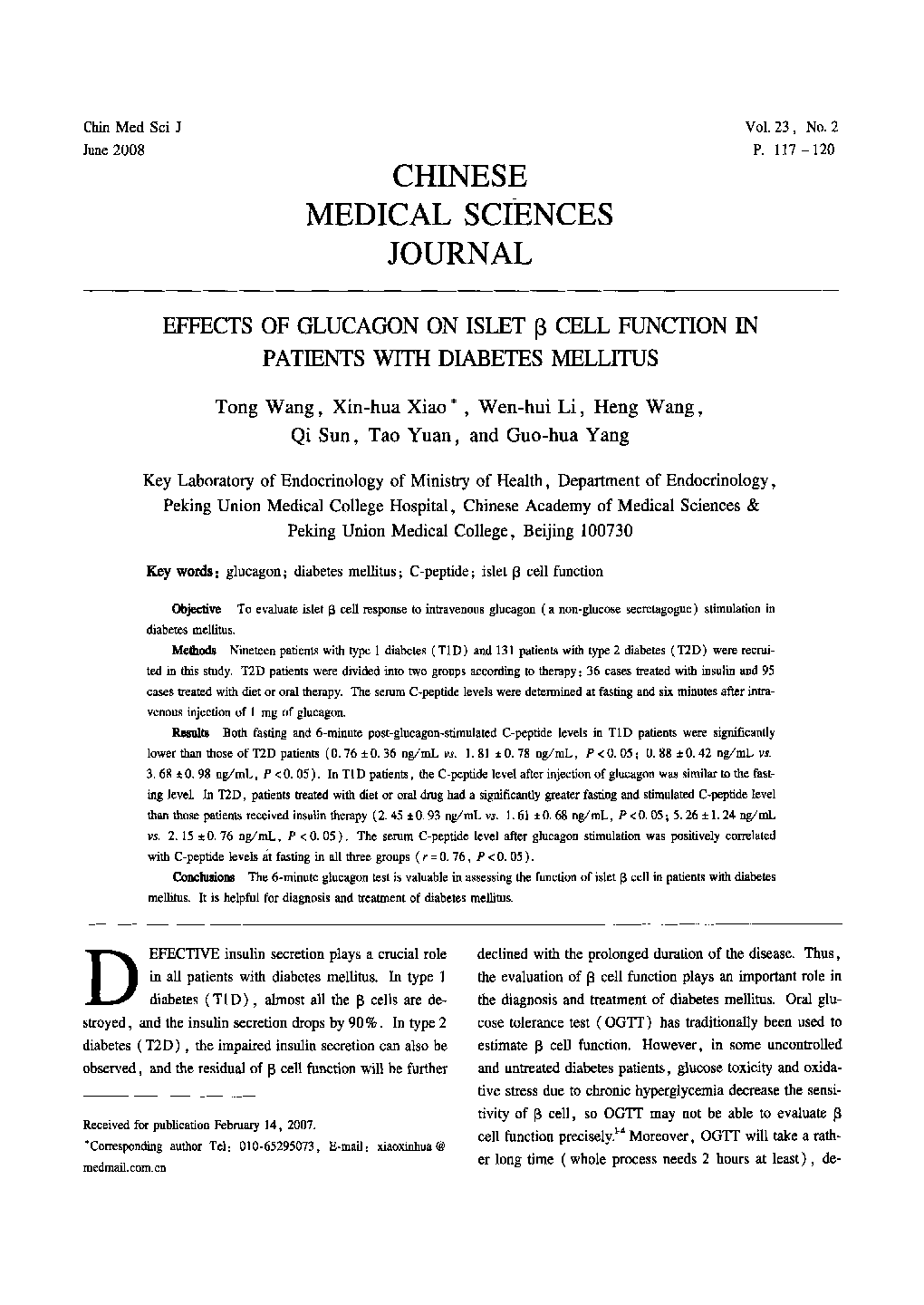| Article ID | Journal | Published Year | Pages | File Type |
|---|---|---|---|---|
| 3459665 | Chinese Medical Sciences Journal | 2008 | 4 Pages |
ObjectiveTo evaluate islet β cell response to intravenous glucagon (a non-glucose secretagogue) stimulation in diabetes mellitus.MethodsNineteen patients with type 1 diabetes (T1D) and 131 patients with type 2 diabetes (T2D) were recruited in this study. T2D patients were divided into two groups according to therapy: 36 cases treated with insulin and 95 cases treated with diet or oral therapy. The serum C-peptide levels were determined at fasting and six minutes after intravenous injection of 1 mg of glucagon.ResultsBoth fasting and 6-minute post-glucagon-stimulated C-peptide levels in T1D patients were significantly lower than those of T2D patients (0.76 ± 0.36 ng/mL vs. 1.81 ± 0.78 ng/mL, P<0.05; 0.88 ± 0.42 ng/mL vs. 3.68 ± 0.98 ng/mL, P<0.05). In T1D patients, the C-peptide level after injection of glucagon was similar to the fasting level. In T2D, patients treated with diet or oral drug had a significantly greater fasting and stimulated C-peptide level than those patients received insulin therapy (2.45 ± 0.93 ng/mL vs. 1.61 ± 0.68 ng/mL, P<0.05; 5.26 ± 1.24 ng/mL vs. 2.15 ± 0.76 ng/mL, P<0.05). The serum C-peptide level after glucagon stimulation was positively correlated with C-peptide levels at fasting in all three groups (r = 0.76, P<0.05).ConclusionThe 6-minute glucagon test is valuable in assessing the function of islet β cell in patients with diabetes mellitus. It is helpful for diagnosis and treatment of diabetes mellitus.
